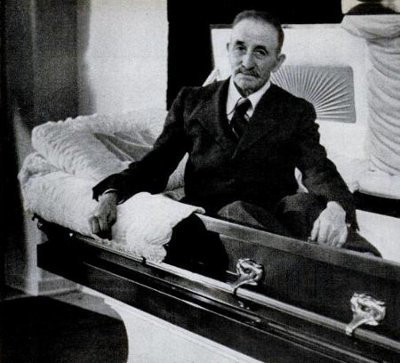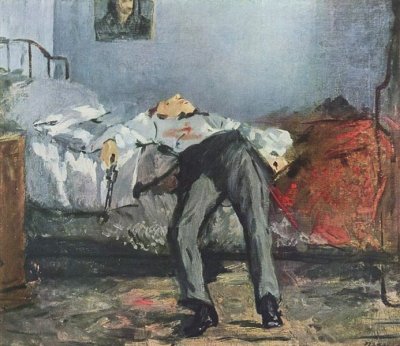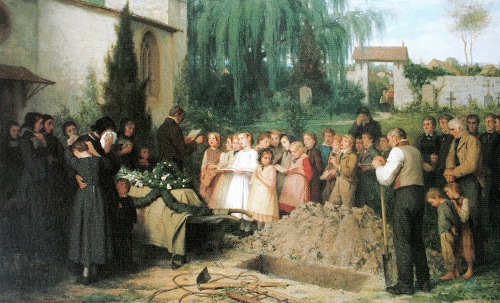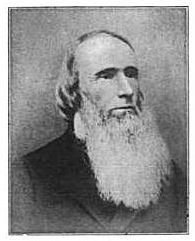
In 1951 Colorado farmer Jim Gernhart held a rehearsal of his own funeral. He watched as eight pallbearers carried a casket from his home to a waiting hearse, then attended it to the local armory, where almost half of Burlington, Colo., turned out for a funeral sermon by the Rev. S.H. Mahaffey.
Gernhart also bought a $465 headstone and a cemetery lot, and the local newspaper even published an obituary. “Real nice funeral, ain’t it?” Gernhart remarked. “Does a man good to see so many people out to bury him.”



